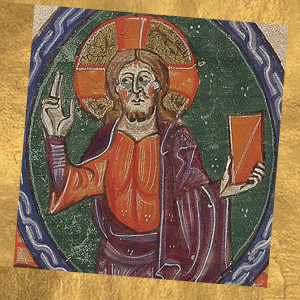Sts. Cyril, Monk and Methodius, Bishop Patrons of Europe

The administrator and the scholar
They were born only two years apart. Methodius – whose baptismal name was Michael – was born in 825 (according to the Constantinian calendar) in the Greek city of Thessalonika, and Cyril followed in 827. History recounts that at first they were apart. The elder brother quickly distinguished himself as a capable administrator, becoming a public official in a province of the Byzantine Empire. The younger brother received a refined education in Constantinople – grammar, rhetoric, astronomy and music – meant to prepare him to be a high-level imperial functionary. But when he was finally offered such a position, Cyril refused it.
A new alphabet for the Bible
When Cyril was about 35, Emperor Michael III thought of him when the Khazars (in today’s Crimea) asked for a learned man who could debate with both Jews and Saracens. At that point the two brothers reunited, setting out on the first of numerous missions together. Two years later, in 863, they were asked to head to Greater Moldavia. The prince of that area had asked for missionaries who could counter the Germanic influence by speaking Slavic, but Cyril and Methodius went far beyond this. Probably realizing how difficult it was to communicate Sacred Scripture to the Slavic tribes in Latin and Greek, the official languages, the brothers – tradition has it, after prayer and fasting – invented a new alphabet, the “Glagolitic” alphabet, more commonly known as Cyrillic: 40 characters derived largely from medieval Greek cursive.
A Gospel for the East
Their work was so extraordinary that the Pope, who called them to Rome, set out in procession to welcome them. The great difficulties of their mission had damaged the health of the younger brother. On February 14, 869, Cyril, who had become a monk, died of an illness. Methodius was consecrated a bishop and continued their mission, overcoming hostility and incomprehension, and teaching his disciples how to translate the sacred texts. He died in 885 and was buried in the cathedral of Velehrad (in today’s Czech Republic). On December 31, 1980, in the apostolic letter Egregiae virtutis, John Paul II proclaimed the brothers patrons of Europe.







